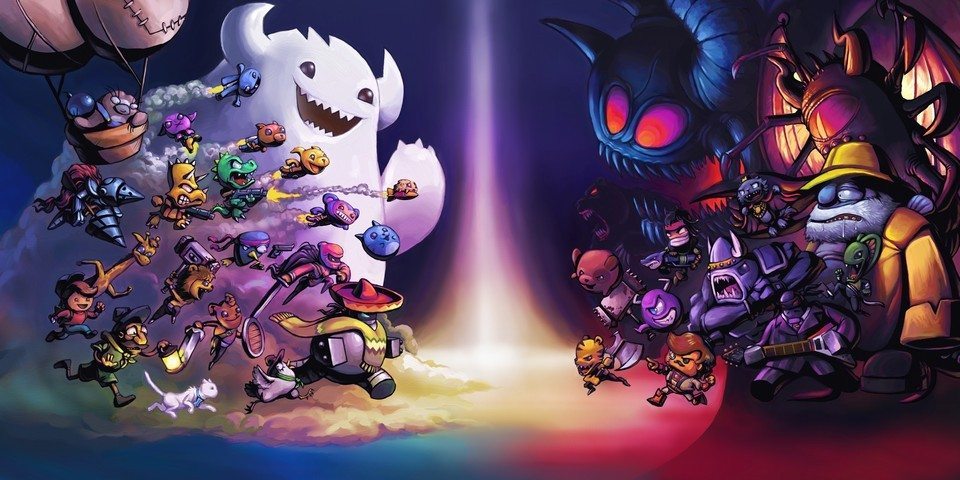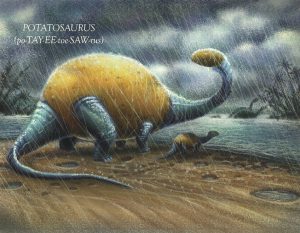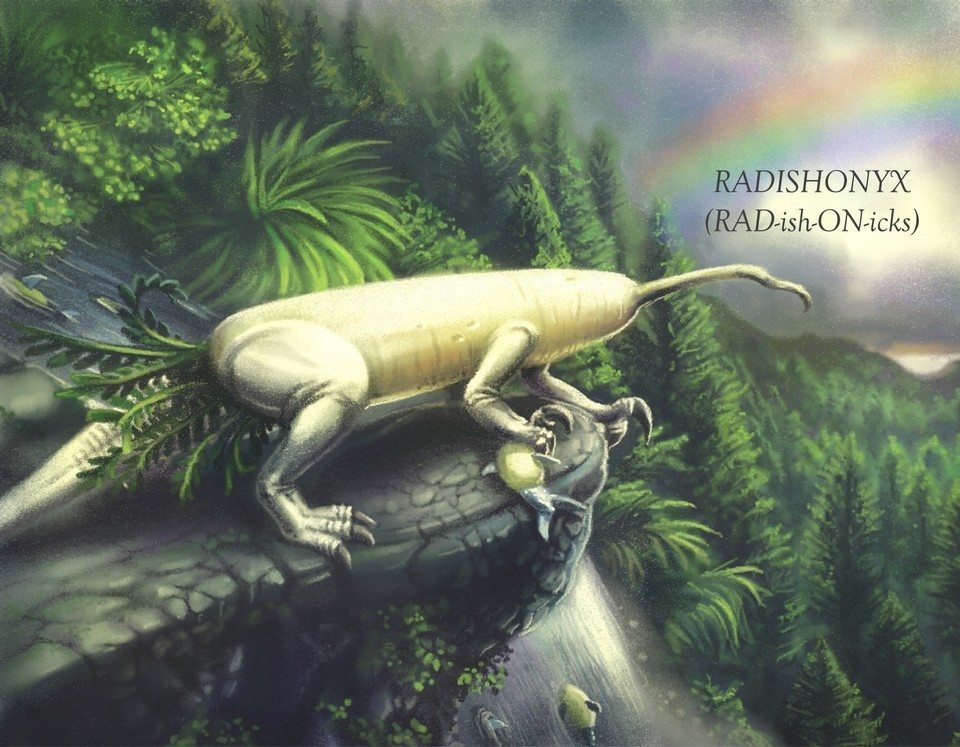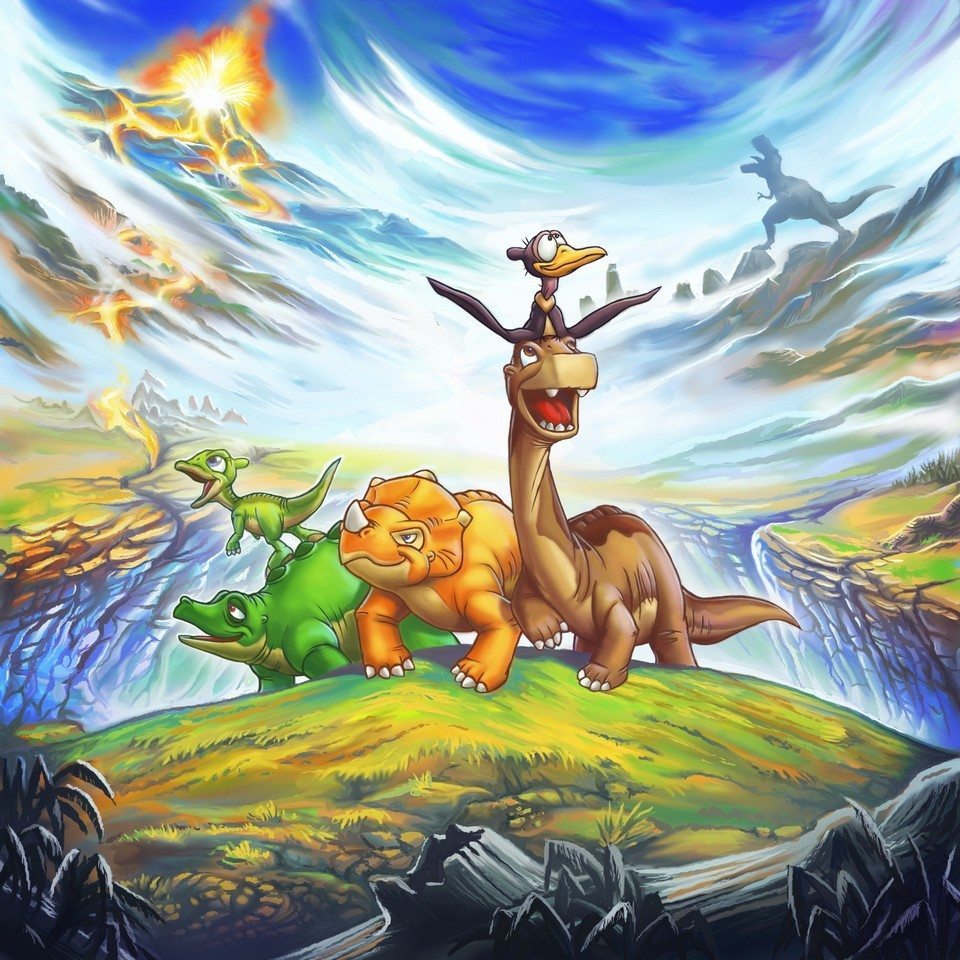An Interview With An ArtRage Artist
Jon Davies is a UK artist who specialises in dinosaurs, dragons and awesome fan art of cartoons and video games. He has just published a quirky and beautiful prehistoric parody book about dinosaur vegetables.

ArtRage Editions: ArtRage 4.5
Platforms: Windows 7
Background: Digital Art
Website: sovanjedi.deviantart.com
Book: Cucumbertops and Other Animals of the Veggiesaur Kingdom
Who are you? What do you want the internet to know about you?
I’m a graphic artist and games designer with 12 years of experience in the videogame industry (7 of which were as an independent developer), with a history in computer graphics and interactive multimedia. I studied at Reading College and School of Arts and Design/Thames Valley University and finished with a Bachelor of Arts degree.
While I primarily specialise in (and started with) pixel art, 3D and animation, I decided to pick up digital painting to help produce promotional art for the games I worked on. Eventually it became so enjoyable that I began dabbling in it as a hobby too!


What country are you from?
I’m from the United Kingdom, in the south of the country.
What kind of artist are you? (how would you describe your style and niche?) What kind of subjects do you draw?
As I have a background in videogames inside and out of work, it has definitely affected my style over the years. As such, I would probably describe my work as colourful and slightly surrealistic. Being that I typically work with low resolution but highly animated subjects for my job, I tend to sacrifice detail and realism in favour of colour and lighting. Making pixel sprites out of such limited palettes really teaches you how to be creative in where and how colour and lighting is applied in an image.
Do you come from a digital or traditional art background?
My background is largely digital, I would say, though I have always had a high appreciation and desire to utilise traditional arts, too. Unfortunately I am a bit of a klutz when it comes to using real watercolours, pencils, oils and so on, so the discovery of digital painting was absolutely perfect for me.
What platform are you on? (e.g. Windows 8, Mac OS 10.9, iPad?)
Windows 7 is my primary working platform, using a Wacom Intuos 4 graphic tablet.
Do you use other programs or traditional media?
I use Autodesk Sketchbook on my Kindle (simply because there is no ArtRage available for it – yet!) and Photoshop, Paint Shop Pro, 3D Studio MAX and GraphicsGale on the desktop, for non-painting purposes. I also like to create models using plastecine and Super Sculpey in my spare time.

About Your New Book: Cucumbertops and Other Animals of the Veggiesaur Kingdom
Jon Davies recently published Cucumbertops and Other Animals of the Veggiesaur Kingdom, a parody encyclopaedia about vegetable dinosaurs.

What’s it about? Who would it appeal to?
It’s a book that stemmed from one question; “where did vegetables come from?” and the common joke response that anything with their roots (no pun intended) in prehistory would have taken on dinosaur-like qualities. It would probably appeal to those who have an interest in prehistory but also have a sense of humour and find something in its silliness.
To be honest, I never had any intended audience in mind – if it appeals to someone, then that’s awesome. I wouldn’t describe it as a children’s book because of the complex (albeit faked) terminology used, though when I had dinosaur books at a very young age I would just look at the pictures and ignore all of the text, so I suppose it doesn’t really matter.
Is this your first book?
Yes it is. Though I had often fantasized about making illustrated children’s books, it is probably not something I would consider as a change of full-time career, so this will probably be my only book too.


How did this project come about?
It came about as a result of my mother. Four years ago she was diagnosed with lung cancer and it had already reached a terminal state, and so faced with that inevitability I was determined to create something that would live on in her memory – she had previously said how much she liked “those funny vegetable dinosaur pictures”, so I vowed to make a book out of them and sell it as a means to raise money for lung cancer research. She has sadly passed away now, but I did at least get to show her the completed (non-printed) version while she was still alive.
Was it always intended to be a book, or did it just evolve into one?
It originally started as just a series of pictures with fabricated documentation to go with each Veggiesaur (you can find the rather rough originals on my DeviantART page). There was no intention of making them into a book before the events that transpired with my mum.


Is it entirely painted in ArtRage?
All of the illustrations were painted in ArtRage, though the text and some colour balancing was done using Photoshop.
Did your style and skills change over time or did you try and keep the images consistent?
I believe my skill with the materials changed over time – in fact I can see quite a difference between the first few that I did and the later illustrations, though I’m hoping that’s just me being nitpicky! It was a very concentrated period of time using Pastels, something I have never had much experience using digitally or traditionally, but because of the emphasis of nostalgia for the pictures I felt it was necessary to use them. I feel I’ve become quite accustomed to them in ArtRage now, though I haven’t really returned to them again since.
Do you have a favourite species?
The Cucumbertops was the very first one that was thought up, and is based on one of my personal favourite dinosaurs, the Triceratops. So that one would have to win by default.

Do any of your dinosaur-like species have feathers? Did you try and stay true to the latest science, or stick to the classic ‘looks’
The book was very purposefully intended to imitate old dinosaur illustrations from the type of books I grew up with, which were still focused on them as giant, arch-backed, tail-dragging, featherless behemoths, though in cases like the Celeriopteryx where it has always been depicted with feathers since its discovery, they have them here too. The look is heavily inspired by the works of Charles Knight, one of the most infamous paleoartists to have ever lived, and someone whose work really captivated me and my love for prehistoric animals since childhood.
On top of that, there are very obvious nods to the commonly observed tropes present in such illustrations – it is very common, for example, to have a Tyrannosaurus fight another dinosaur (usually a Triceratops) in front of an active volcano because of the epicness of such imagery, so my Veggiesaurs book has a similar scene. It is also common to have other animals included with dinosaur books that weren’t dinosaurs, such as Dimetrodon and the flying pterosaurs, so they made it in too. It is quite purposefully “wrong” in a lot of aspects and I hope it does not annoy too many palaentologists, though the ones I have shown it to thus far have all appreciated these nods and find them funny.


How did you come up with specific combinations? Visual appeal, pun value, or anything else?
A little of everything. I tried to choose both animals and vegetables that would make for a wide variety of visuals and names (I didn’t want to pick too many “-osaurus” animals in order to avoid repetition, so sometimes picking lesser known or even obsolete animal names happened) Sometimes a good pun presented itself, like in the case of Yamphorhynchus, and sometimes a vegetable name was picked if it sounded better, which happened with Zucchinimimus (in the UK, we call zucchinis “courgettes” – but Courgettemimus just felt like an awkward name to me.)

Which illustration do you like best?
I would have to say my personal favourite is the Turnipleurodon, because I was really pleased with the colours and the depth achieved in the animal both above and below the water. Second best would probably have to be the Radishonyx, if only because rainbows are cool.

What are your archaeological gardening credentials?
I actually have a big slab of prehistoric seabed (with million-years-old kelp embedded in it) which was found in a quarry down the road from my old house. Does that count?!
General ArtRage Questions
What ArtRage works or projects are you most proud of? Are they the ones everyone else likes? Tell us about them!
Even though I do my best in any piece of art I produce, I think my favourite pieces have been ones I’ve painted for my niece and nephew for Christmas and birthday presents. Not only do they result in generally higher quality pictures than I expect, but they feature some of my favourite movies, cartoons and games too (Land Before Time, Pokémon and How To Train Your Dragon to name a few). Even if they are digital and not painstakingly handcrafted originals printed on the canvas, it feels nice to have created something personal for them to cherish when they grow up.

How do you choose what to draw?
Whatever inspires me at that particular moment usually does it for me: I create a lot of fanart because the movies, games or books they are based on fire up my enthusiasm. Sometimes I am inspired to work on something that I feel would plug a gap in my artistic skills, such as speed painting or study of other animals or landscapes I’m less comfortable with. Sometimes if I’m having a bad day I’ll just fire ArtRage up and paint some clouds for no real reason. Painting clouds is surprisingly therapeutic, I find.

Are you trying to tell a particular story/convey a certain meaning, or just basing it on what looks good? What response do you want from people?
I think that, seeing as much of my work involves promotional art or in-game art for videogames, I kind of have to at least paint some kind of immersive setting, or make people feel more excited and inquisitive for the subject matter at hand. I want them to feel like they need to know more about what is presented to them. It’s not necessarily telling a whole story in the art, but hinting that the subject matter is a small preview into a much bigger event.

How long have you been using ArtRage?
I started using ArtRage way back with the original free version, which I believe offered just watercolours. It was super fun, but at the time my job needed me to use something different that could offer more features and be compatible with Photoshop, so I switched to Corel Painter. Roughly four years ago I switched back to the newest ArtRage for the time, and fell in love again – faster, much more stable, much cheaper and just a more enjoyable experience. I’ve never looked back since!
How did you come across the program?
I believe it was recommended to me by my old boss, who has a penchant for finding quirky programs all the time. He knew I had an interest in experimenting with artstyles for the games I worked on, and so introduced me to it.


Why do you use ArtRage?
I find it relaxing to use, with a no-nonsense UI and just the right level of functionality to suit my majority needs – just having it open makes me feel calmer, as strange as that may sound. I also find it to be much more stable and powerful than other digital paint packages I have used before, without being a hog on computer resources. To be perfectly honest, it feels a bit like voodoo magic was used in its creation…
Where does ArtRage fit into your workflow?
When creating something like a piece of promotional material I will try and create as much of the piece as possible in ArtRage (probably 95% of a piece’s time is spent in there). I will then bring it in to Photoshop for any extra effects and to make sure the .PSD is suitable for external use by clients or other workmates. I also use it when I need to sketch concepts out for particular elements in a game, such as a background, enemy or stage design.
What are your favourite ArtRage features?
References are invaluable, they’re easy to drop in and out and inspect closer for details (plus I enjoy the way they are presented, as well as the ability to shrink and rotate them as I please). Organising my custom brushes into their own groups is pretty great, too. And while I have not used the feature a huge amount, Paint Symmetry proved to be a very useful tool for a few particular assignments.
Features like grouping layers, locking transparencies and other layer functions are all frequently used. I really like the ability to scale and rotate UI elements on the fly. And I must make special mention of the virtual glass of water you can use to clean your watercolour brushes with – it’s such a simple but beautiful touch. It was what made me fall in love with ArtRage in the first place!
Least used?
Stickers and stencils – I can appreciate their novelty fun value, but I have not really felt the need to use them yet.



Do you have any tips for other artists who might want to do the same thing as you?
Practicing a lot helps, obviously – try and pinpoint exact areas you can or need to improve in and make a concentrated effort to address them. If something inspires you greatly don’t be afraid to try to imitate it for your personal work, as within time it may eventually evolve into something with your own personal twist on it. Don’t underestimate the value of a secondary, subtler light source either: it’s a nice cheat to making a good piece of art into a great piece!
Any ArtRage specific tips?
In the last year I have finally learned exactly the brushes and settings I use most frequently, and created duplicates of these to place in their own Presets groups. If you are concerned about producing a lot of work with similar consistency, I would strongly recommend setting this up for yourself as soon as you can.

Would you recommend ArtRage for professional work?
Absolutely! Though it may serve somewhat of a niche compared to all-in-one applications like Photoshop, it provides the means to produce very interesting, eyecatching artwork that people will appreciate. That, and it is just a highly enjoyable program to use, even for work.
Any question(s) you wish we’d asked and would like to answer?
I don’t think so – this has been very comprehensive!
You can view more of Jon Davies’ art on DeviantART, check him out on Twitter and purchase Cucumbertops and Other Animals of the Veggiesaur Kingdom at Lulu.com